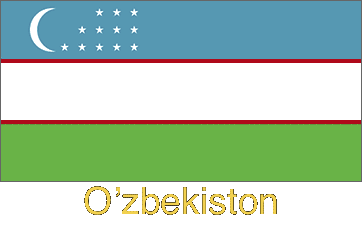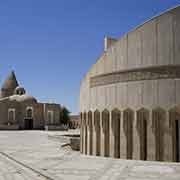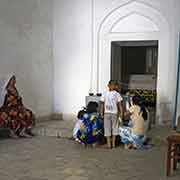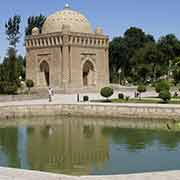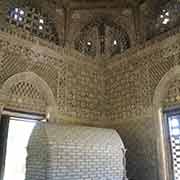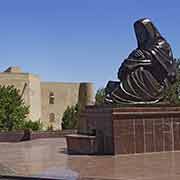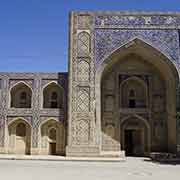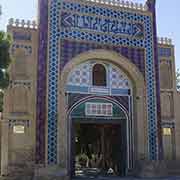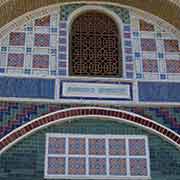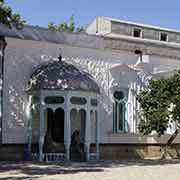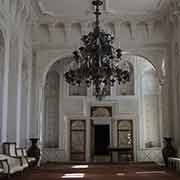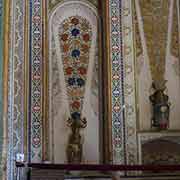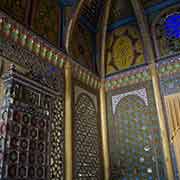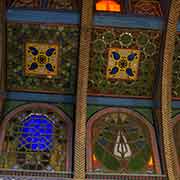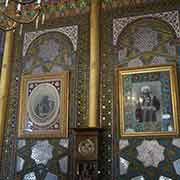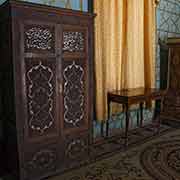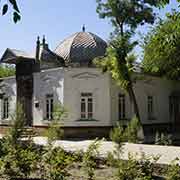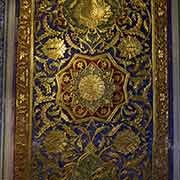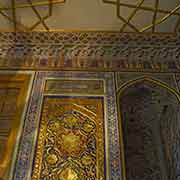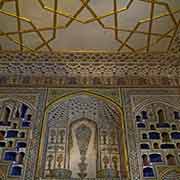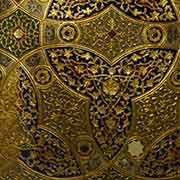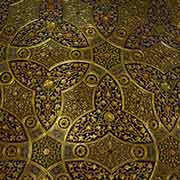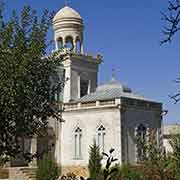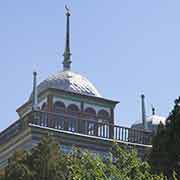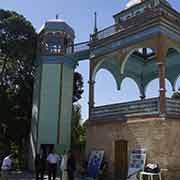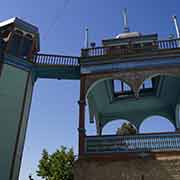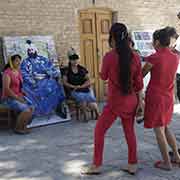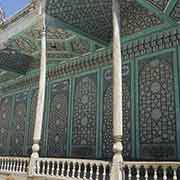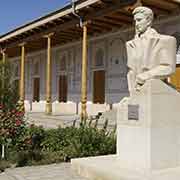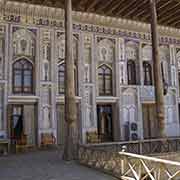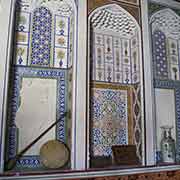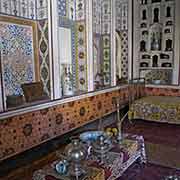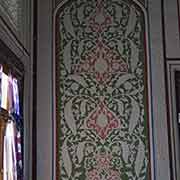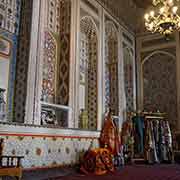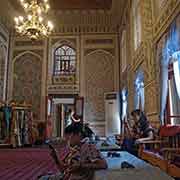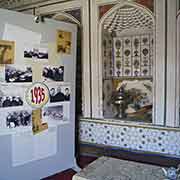Photos of Bukhara: towards the outskirts, Uzbekistan
Bukhara: towards the outskirts
About 4 kilometres to the north of the city of Bukhara is the lavish palace of the last Emir of Bukhara, dating from the beginning of the 20th century, a striking example of Russian-influenced architecture on the outside. Inside however, each room is decorated in stunning, traditional Bukharan ornamentation and design. The rooms are each uniquely decorated. In the gardens are the harem quarters, where the last emir, Said Mir Mohammed Alim Khan, kept his concubines who would swim in the pool. Overlooking the pool is a viewing platform from where he would savour the view of his naked concubines frolicking in the waters below and toss a ripe apple to the beauty who had most captivated his heart. Once chosen, the fortunate girl would be washed in donkey's milk (the emir found the odour strangely arousing) and delivered to his bed chambers.
you may then send it as a postcard if you wish.
To the south west of the city is the house of Fayzulla Khojaev (Fayzullo Xo'jaev in present Uzbek spelling), the home of the man who plotted with the Bolsheviks to remove Emir Alim Khan. He was rewarded with the presidency of the Bukhara People’s Republic, chairmanship of the Council of People’s Commissars of the Uzbek SSR, and finally, as he opposed Joseph Stalin's heavy-handed control, particularly in the matter of cotton monoculture, purged and executed on 13 March 1938. His house, now a museum honouring his memory, is beautifully adorned with traditional Bukharan ornamentation and design.
Just outside the historical centre are two noteworthy mausoleums: the Chashma-Ayub Mausoleum, constructed during Timur’s reign and known as Job's well, due to the legend in which Job (Ayub) visited this place and made a well by striking the ground with his staff. The water of this well is still pure and is considered healing. And in a park dedicated to the Samanid dynasty, one of the last native Persian dynasties that ruled in Central Asia in the 9th and 10th centuries, is the Samanid mausoleum, considered to be one of the most highly esteemed work of Central Asian architecture, built between 892 and 943 CE as the resting-place of Ismail Samani - a powerful and influential amir of the Samanids.


